Sebekhotep was a senior treasury official of the reign of Thutmose IV (about 1400–1390 B.C.E.). One of his responsibilities was to deal with foreign gifts brought to the king.
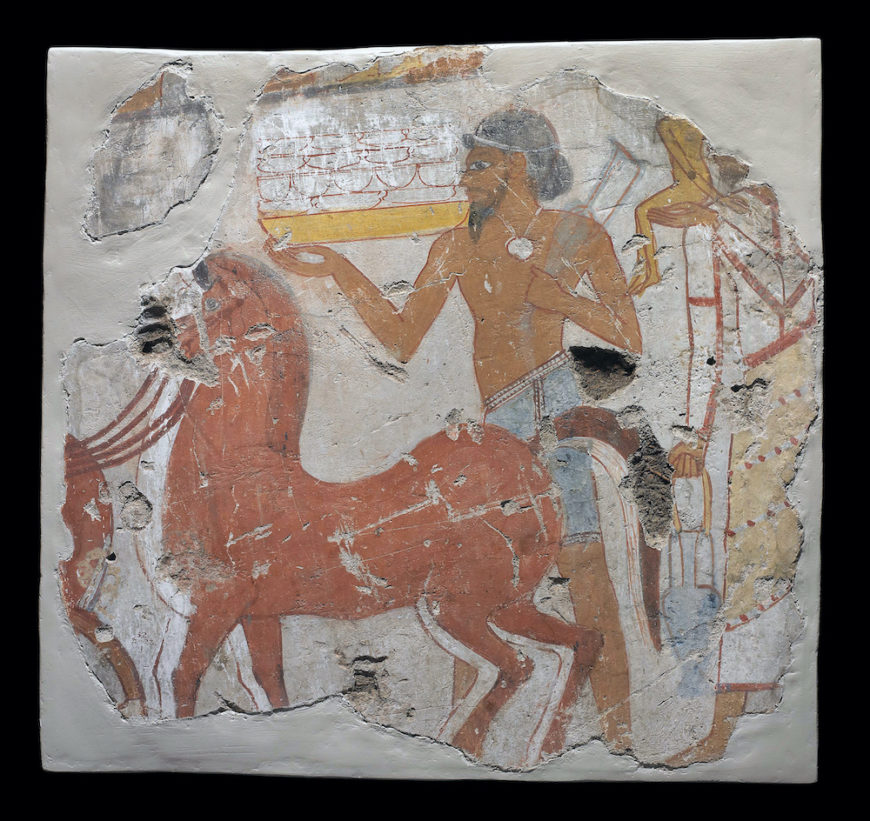
Wall-painting of Asiatic tribute-bearers, probably from the tomb of Sobekhotep, Thebes, c. 1400 B.C.E., New Kingdom, reign of Thutmose IV, painted stucco, 60 x 58.5 (© Trustees of the British Museum)
This fragment was a small part of a scene that showed Sebekhotep receiving the produce of the Near East and Africa on behalf of Thutmose IV. The wheels of a chariot are visible at the bottom left-hand corner of this fragment. They are followed by two horses, a man carrying a tray of (silver?) items, and a man or woman in a long elaborate robe holding a child.
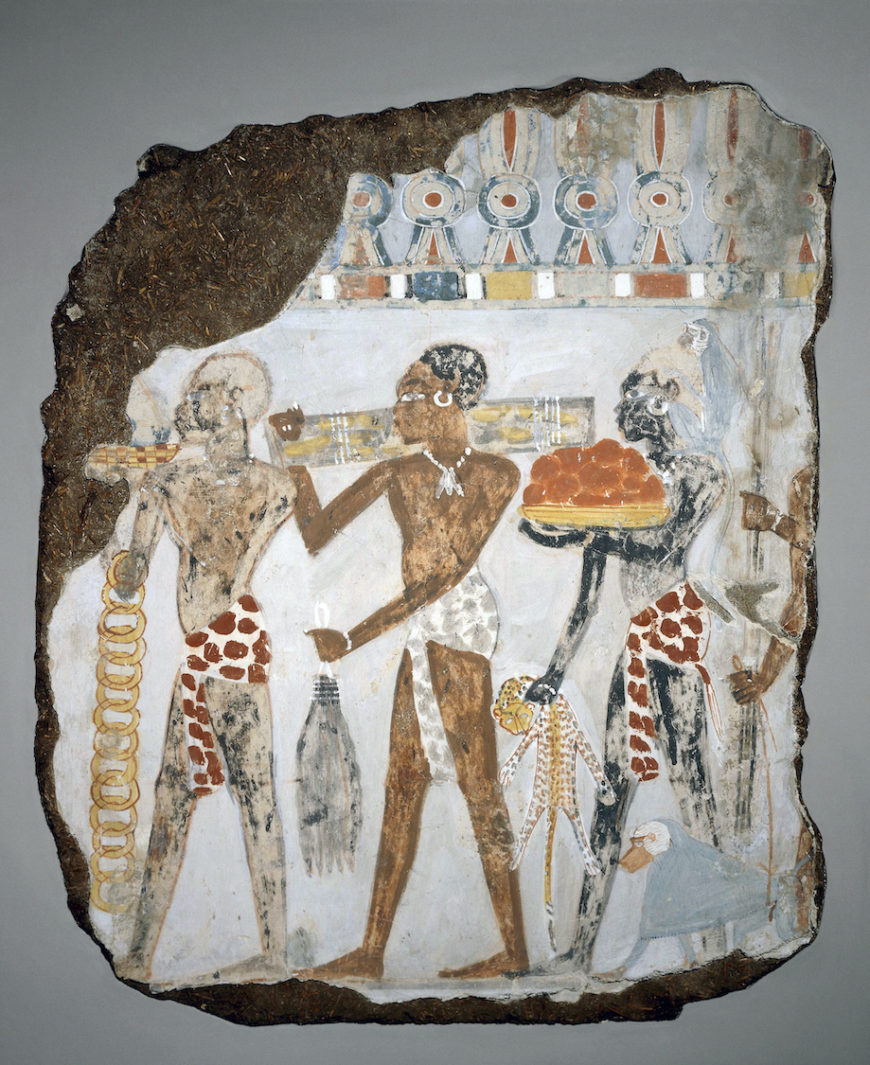
Part of tomb wall showing Nubians bringing tribute from the south to Pharaoh. Wall-painting, probably from the tomb of Sobekhotep, Thebes, c. 1400 B.C.E., New Kingdom, reign of Thutmose IV, painted stucco, 60 x 58.5 (© Trustees of the British Museum)
This fragment was a small part of a scene that showed Sebekhotep receiving the produce of the Near East and of Africa on behalf of Thutmose IV. Three men (probably Nubians) carry luxury items characteristic of their country: gold rings, jasper, ebony logs, giraffe tails, a leopard skin, a live baboon and a monkey. The variation of the color of the men’s skin may represent their different skin types, though it could have been done for aesthetic reasons, to make the individual figures stand out more.
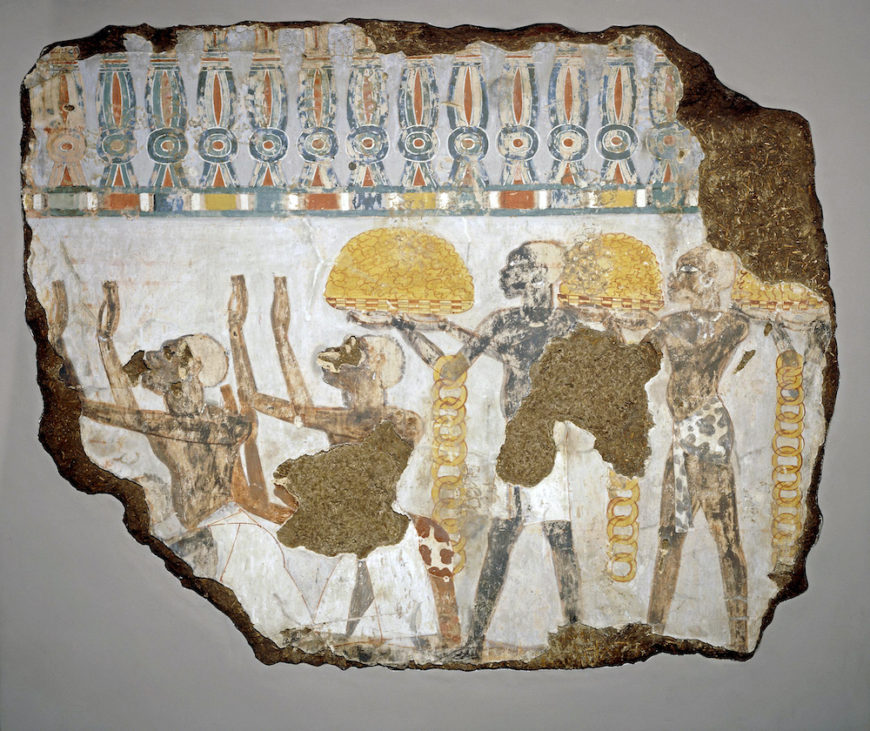
Painted representation of Nubians offering gold nuggets and rings to king (not seen). Wall-painting, probably from the tomb of Sobekhotep, Thebes, c. 1400 B.C.E., New Kingdom, reign of Thutmose IV, painted stucco, 60 x 58.5 (© Trustees of the British Museum)
This fragment was part of a scene that showed Sebekhotep receiving the produce of the Near East and Africa on behalf of Thutmose IV. At the left, three men (probably Nubians) pay homage to Sebekhotep as representative of the king. They are followed by three more men carrying plates of gold with interlinked rings of gold over their arms. Gold was one of the most important products of Nubia. This is the usual way that gold is represented in Egyptian tomb paintings; the idealized image is emphasized by the fact that no one man could possibly carry the mass of gold shown here! The variation in color of the men’s skin may represent their different skin types, though it could have been done for aesthetic reasons, to make the individual figures stand out more.
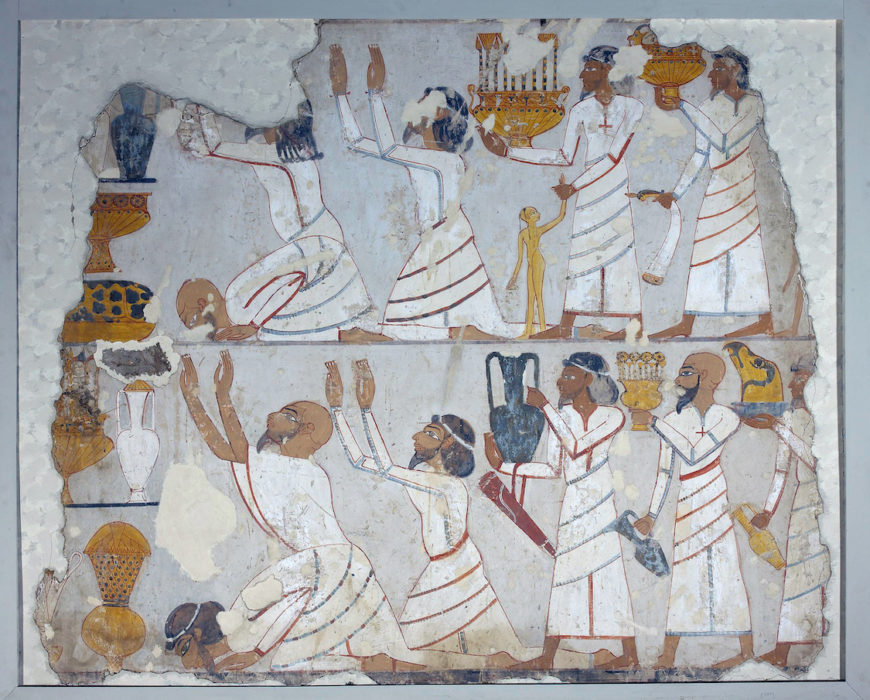
Scene of Asiatic tribute-bearers in two registers., and visitor graffito on left edge. Wall-painting, probably from the tomb of Sobekhotep, Thebes, c. 1400 B.C.E., New Kingdom, reign of Thutmose IV, painted stucco, 60 x 58.5 (© Trustees of the British Museum)
This fragment was part of a scene that showed Sebekhotep receiving the produce of the Near East and Africa on behalf of Thutmose IV. Two pairs of two men (probably Syrians) pay homage to Sebekhotep as the kings’ representative. Others carry vessels. Some of these items are most elaborate; made of gold inlaid with semi-precious stones. One man leads a small girl by the hand, while another carries an elephant tusk.
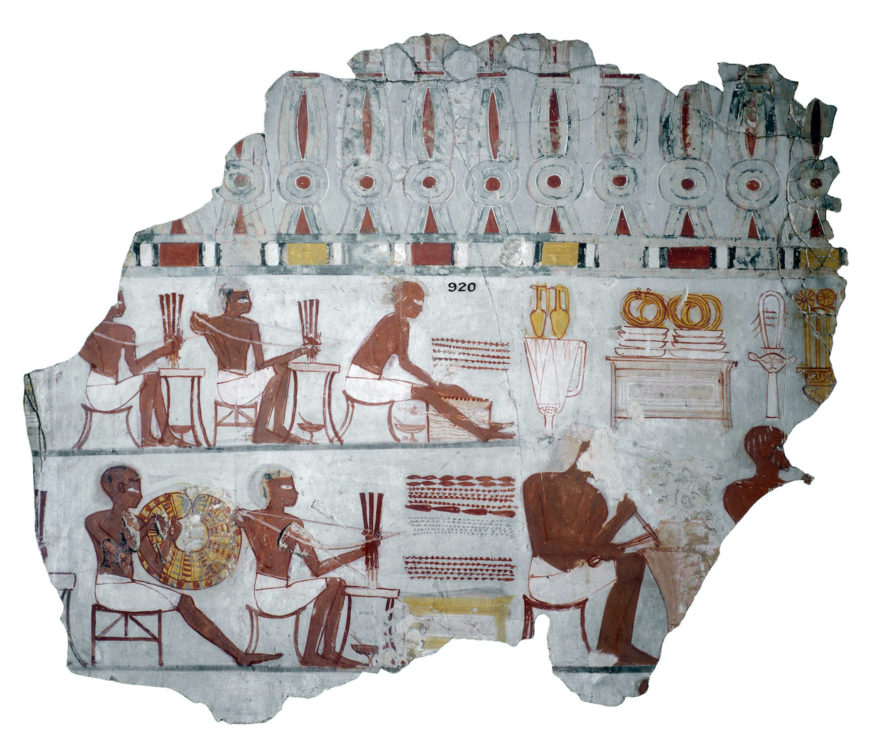
Scene showing the manufacture of valuable items, such as jewelry. Wall-painting, probably from the tomb of Sobekhotep, Thebes, c. 1400 B.C.E., New Kingdom, reign of Thutmose IV, painted stucco, 60 x 58.5 (© Trustees of the British Museum)
Scenes showing the manufacture of valuable items, such as jewelry, on the walls of his tomb helped to indicate Sebekhotep’s importance. These two registers show different stages and products of the jeweler’s craft, in particular the broad collars so characteristic of festive scenes in tomb paintings. The men in the upper part of this painting are probably stringing beads, while one man in the lower part of the register is making them into the large collar shown on his lap.
Such scenes would have been placed in Sebekhotep’s tomb to illustrate his importance as an official, and to represent his relationship with the king; Sebekhotep enjoyed the privileges of office in death as in life.
© Trustees of the British Museum

